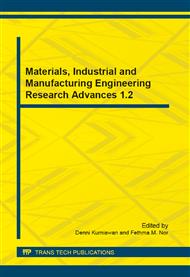p.241
p.247
p.253
p.259
p.265
p.271
p.277
p.281
p.287
Application of Statistical Taguchi Method to Optimize Main Elements in the Residential Buildings in Malaysia Based Energy Consumption
Abstract:
Today energy consumption is one of the controversial issues in the world. The rapid growing world energy consumption has already increased concern about the supply problems, heavy environmental effects such as global warming, climate change and etc. One of the most users of energy is residential buildings that consume the biggest share of energy. Growth in population, rising demand for buildings together causes to increase the upward trend in energy consumption. Therefore, energy efficiency in buildings plays a significant role to decrease the environmental effect. The goal of this paper is optimizing the main elements which are window, ceiling and wall by considering the effect of uncontrollable factors such as humidity , temperature and pressure in residential buildings using statistical method namely Taguchi method (JMP 11 software). A two-storey house in Malaysia was selected to simulate by means of BIM application. Based on the result, the optimum energy saving will be achieved when the type of material which are used for wall ,ceiling and window to be Brick Plaster , Acoustic Tile Suspended and Single Glazed Alum Frame respectively.
Info:
Periodical:
Pages:
265-269
Citation:
Online since:
August 2014
Price:
Сopyright:
© 2014 Trans Tech Publications Ltd. All Rights Reserved
Share:
Citation:


